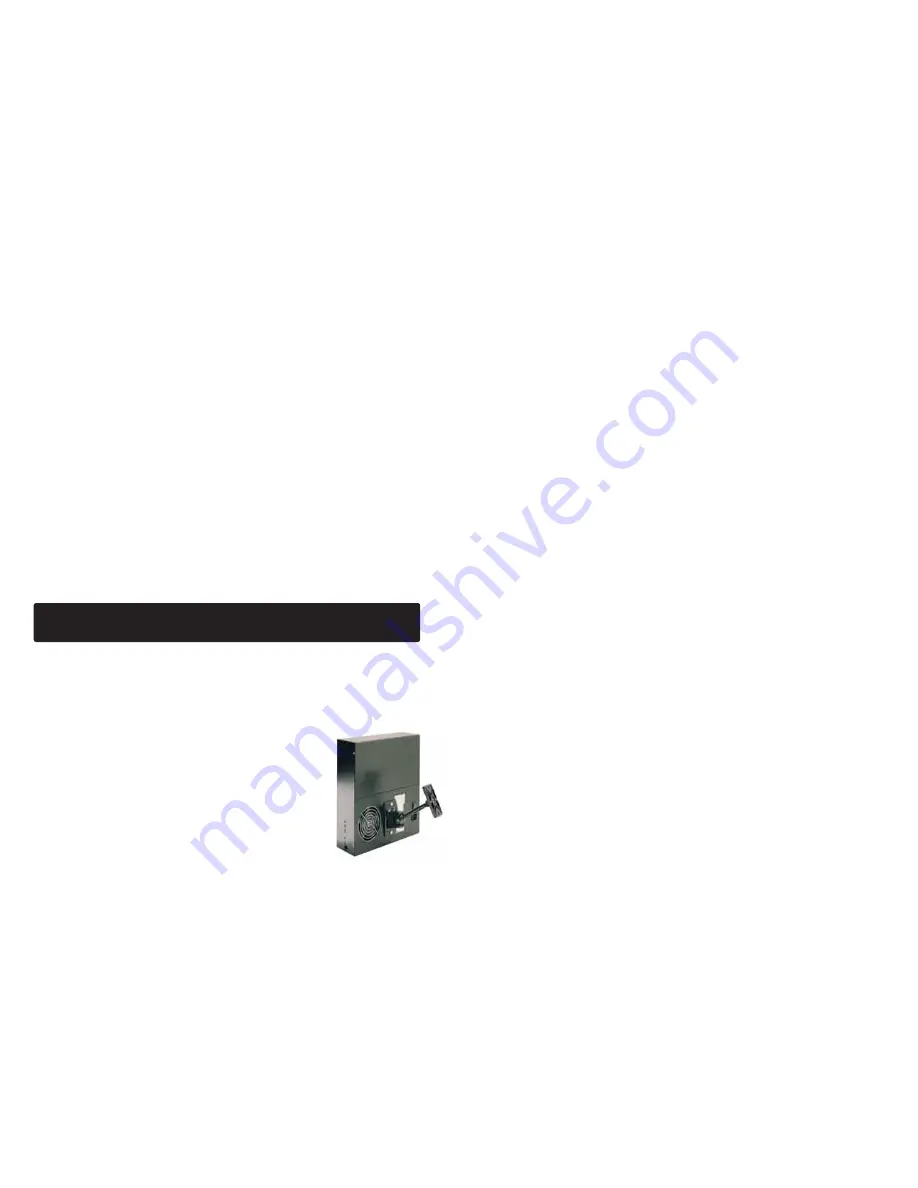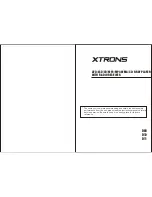
6
Adjusting HSS
Adjust the mounting angle to ensure that
the directed audio is focused at the
correct area of interest.
DIRECT MODE:
As explained earlier in this manual, Direct Mode
assumes that the listener will be in a direct path
in front of the
HSS
device. He or she will hear
the audible sound as the sound column passes
by their head. The sound will continue to travel
past them until it either strikes a surface or is
absorbed by the air (over a long distance).
What happens to the sound after it strikes
a surface? (Sorry, some basic acoustical
education is coming up…)
A number of things can happen when a sound
wave strikes a surface depending on the
surface itself. If the surface is flat and hard
(e.g. a mirror or plaster board), the sound will
reflect from the surface. Some energy will be
lost, but some of the sound will be reflected
back into the environment. The angle at which
the sound strikes the surface will equal the
angle at which it will reflect (assuming a
perfect reflector). Of course, there is no
perfect reflector so some amount of the
sound will scatter back into the entire area,
while the loudest portion will follow the
refection path.
If the surface is absorptive at the proper
frequencies, the surface will contain the sound
within the surface and little sound will be
directed back into the environment. The last
alternative is to make the surface diffusive. If
you diffuse the reflection you essentially
reflect it back into the room in all directions.
Therefore, no single reflection is louder than
all the rest.
One of the great benefits of
HSS
is the fact
that we can now predict where the sound
will strike a surface (first reflection) and treat
that surface accordingly. Since traditional
loudspeakers emit sound in all directions, the
audio always sounds like it is coming from
the speaker device because no matter
where
you are in the room, the first sound you hear
is actually coming directly at you from the
speaker. Now, with
HSS
, we only have one
column of sound to deal with.
When you consider the “First Reflection” of
the HSS sound column, remember, you can:
1) REFLECT IT! Angle the
HSS
device
correctly so that the first reflection is directed
where you want it to go. For example, if you
don’t want to hear the first reflection, direct it
up into the ceiling, or direct it into an absorptive
surface someplace else in the room, etc.
Also remember that sound does dissipate over
distance. Therefore, the farther you can make
the reflection travel, the lower it will be in vol-
ume when you hear it again. A good example
would be an overhead
HSS
unit directed down
towards the floor with the first reflection going
back up into the ceiling. If the ceiling was 50 ft.
away, the reflected sound would have to trav-
el 50 ft. up and 50 ft. back down before you
would hear it again. It may be completely
inaudible by that time depending on how loud it
was when it started, the composition of the
ceiling, and ambient sound level.
2) ABSORB IT! Make the surface struck by
the first sound reflection highly absorptive.
The better the absorber, the lower the reflected
energy. Carpet, for example, is a very poor
absorber. It will absorb some of the highest
sound frequencies, but will reflect the remainder.
Some office wall panels are somewhat better,
but still they will reflect the majority of the
energy. A local acoustical technician can
provide you with the most appropriate absorption
material for the individual installation.
3) DIFFUSE IT! Make the surface multi-layered
and multi-dimensional. The more irregular the
surface, the better the diffusion.
NOTE: You can obtain more information
about Reflectors, Absorbers, and Diffusors
from RPG Diffusor Systems, Inc.
http://www.rpginc.com/
Selecting Location for Installation
The mounting method and installation of this
HSS
device has most likely already been determined
by your
HSS
provider. However, some background information may be useful.
The most important thing to remember is that
HSS
produces a beam (column) of audible sound.
It does not create a point of sound in space. If the
HSS
unit is pointed directly toward the listener,
he or she will hear the maximum audio volume possible. This is similar to shining a flashlight toward
someone. If they stand in the beam and look at the flashlight, they easily see the light coming from
the end of the flashlight.
HSS
performs in a similar fashion. If you aim the audible sound column
directly toward the listener, we refer to this as using the
HSS
device in the Direct Mode.
However, if the listener is not in the beam and the sound column strikes a surface, the sound
will be reflected back into the environment. What the listener will hear, is the reflected sound
from the surface. The listener will perceive the sound as originating on the reflective surface
because that is, in fact, the direction of the sound is coming from when he or she hears it.
The reflective surface becomes what is called a Virtual Sound Source. Using
HSS
in this mode
is known as Virtual Mode.
Environmental
Thermal:
The proprietary emitter device used inside the
HSS
unit can be damaged by
excessive heat. The only recovery from this is to replace the emitter device. Therefore, care
should be taken to avoid exposure of the emitter surface to direct sunlight for extended
periods of time or installation of the unit in other applications where the ambient temperature
could potentially cause damage.
Humidity:
While the
HSS
unit is not subject to permanent damage by high humidity, it should
be protected from direct rain or water—the same as you would protect any electronics
device. If the unit is moved from a cool to a warm environment quickly and moisture condens-
es on the emitter units, it is recommended to wait until the emitter surface has dried before apply-
ing power. The moisture on the emitter surface adds extra mass to the sensitive film and will
detrimentally affect the performance.
Vibration:
Your
HSS
unit is not particularly sensitive to vibration. Use com-
mon sense regarding installation as you would with any electronics device.
Dust and Dirt:
The sensitive piezoelectric film used in the emitter produc-
tion is sensitive to added mass (weight) of any kind.
Mounting
(optional accessories)
Multiple mounting bracket options are available for HSS devices. The vari-
ous bracket assemblies allow maximum flexibility when mounting the unit
horizontally, vertically, or at an angle. Download the Mounting Bracket
Accessory document from:
http://www.atcsd.com/pdf/OMNIMNTB.PDF
NOTE: The bracket mounting bolts on the rear of the HSS unit require
USA 10-32 Nuts (metric M5 (5mm - 8)).
NOTE:
This device is sensitive to temperature extremes, and may be permanently
damaged by temperatures that exceed those listed in the General Specifications
5


























